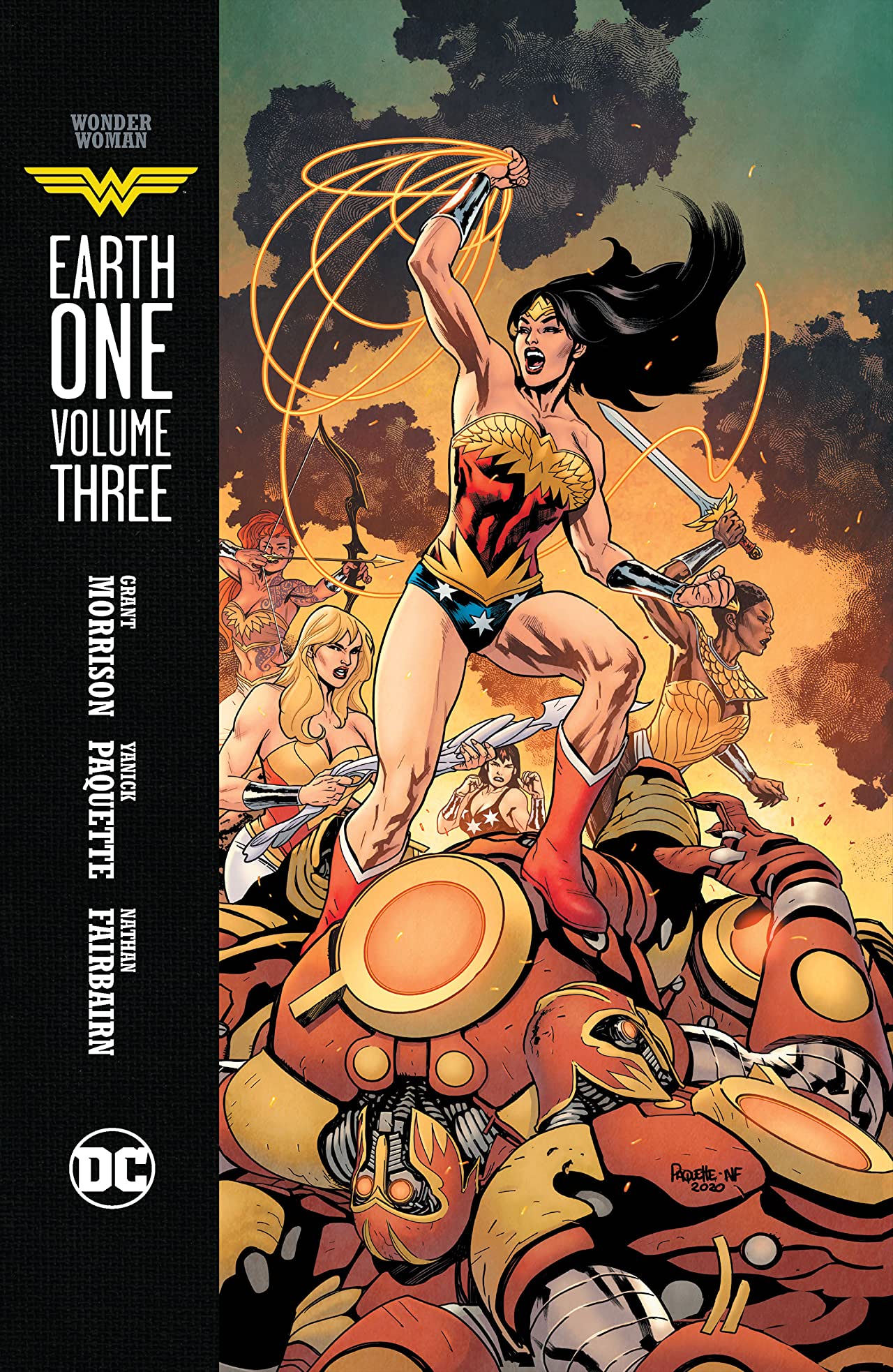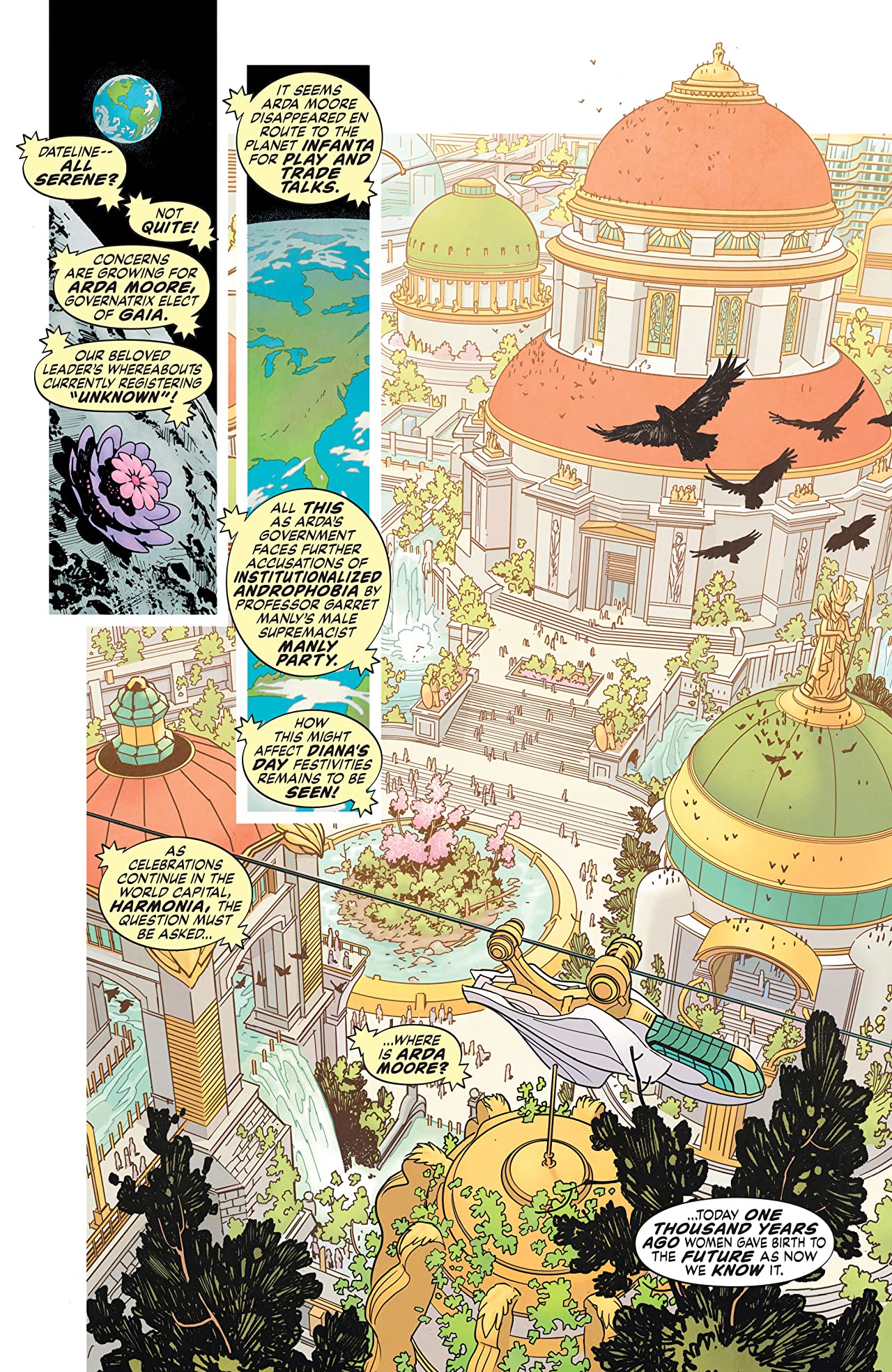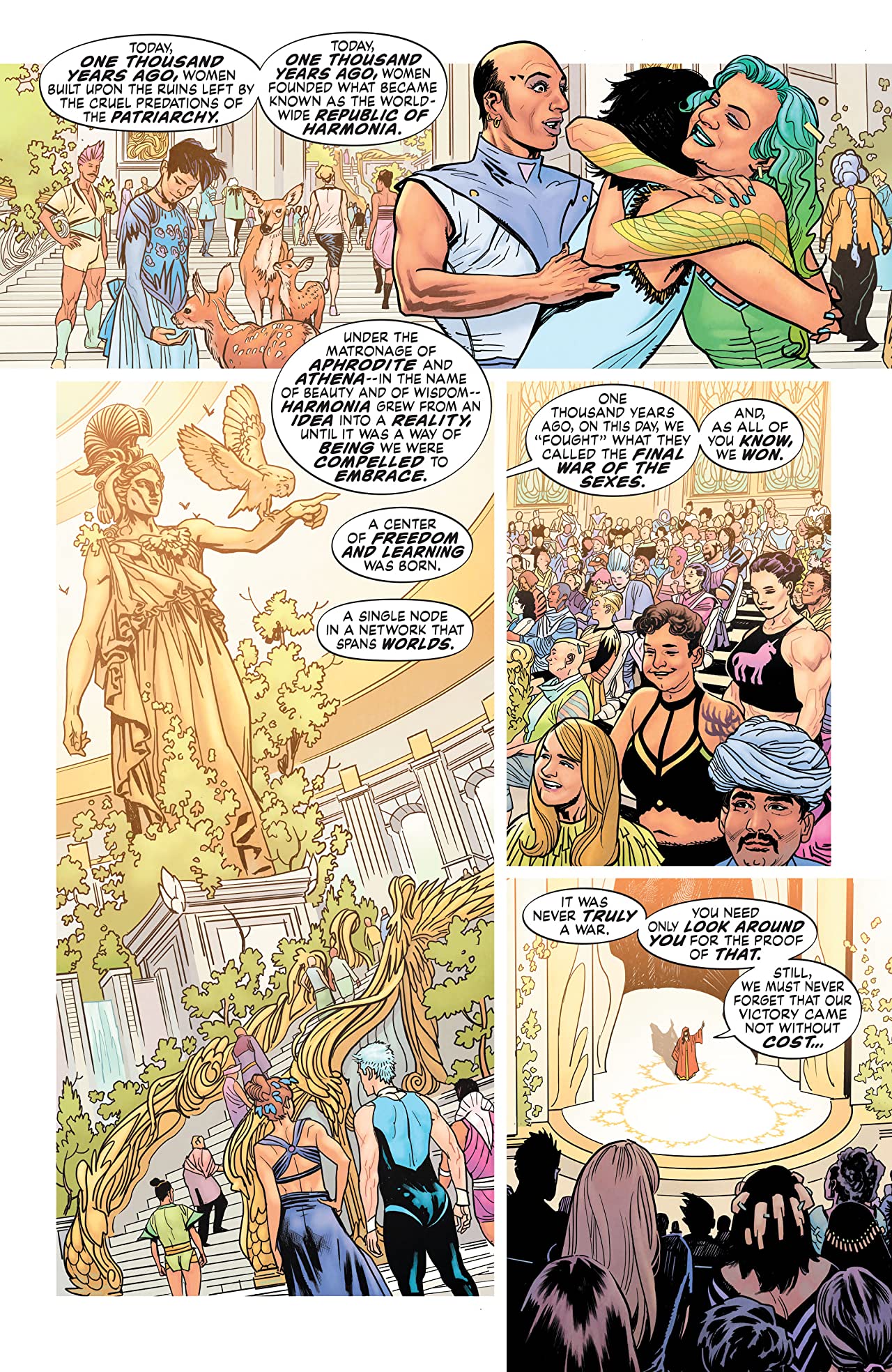Best Shots Review - Wonder Woman: Earth One Volume 3 show us that we can't give up trying to be better
Grant Morrison and Yanick Paquette's epic Wonder Woman series reaches its finale

Grant Morrison is a dreamer. Since the early days of their Doom Patrol and Animal Man, they have tried to will their dreams and desires for a better world into reality. From those old stories to more popular works like All-Star Superman and Batman, Morrison has used the myth of superheroes to show us what we are and what we can be. It's simple to say that superheroes are our modern gods but Morrison views them more as the unfulfilled potential of mankind. Morrison is not seeking the power trip of superheroes; they're looking at what we might be able to achieve if we were able to overcome our limited natures.
Written by Grant Morrison
Art by Yanick Paquette and Nathan Fairbairn
Lettering by Todd Klein
Published by DC
'Rama Rating: 8 out of 10
Wonder Woman: Earth One Volume 3 continues Morrison's unwavering, and still unfulfilled goal of leading us to be something better than we are now. Their Diana is an aspirational goal yet Morrison recognizes how ineffective our attempts to match these legends are doomed to be. No matter how we may try to change ourselves, our methods, and even our worlds, our successes are fated to be matched by our failures. But for Morrison, that's never a reason to stop trying. In fact, it's the fuel we need to keep going. Our failings are what should drive us to be better.

With their frequent artistic partner Yanick Paquette, Morrison picks up Diana's story following the death of her mother. Now queen of the Amazons, Diana has to prepare them for a final battle with Man's World.
A second storyline shows us the world 1,000 years after Diana's battles, a world that was shaped by her victories over the men who wanted to dominate and subdue her Paradise Island. Morrison and Paquette bounce back and forth between these two time periods, maintaining the suspense of Diana's struggles in the present day while showing us the distant effects of those struggles. The present-day sequences read more like a traditional Wonder Woman story, as sometimes it is strength and force that is called for in these kinds of battles. The glimpses of the future show us how far Diana's legacy changes the world while simultaneously undercutting any hope of a universal paradise because of the same old resentments and power struggles.
This Diana is the warrior in this never-ending battle for a better future. But she continues to fight so that the rest of us, wherever we fall on the spectrum of gender identity, can find harmony and peace in our lives. As she battles Maxwell Lord and his attacking robotic hordes, her inner struggle is trying to figure out what kind of leader she needs to be. After her mother's death, she's supposed to take Hippolyta's place as ruler of the Amazons, but she's not her mother, leading Diana to a personal revelation that opens up a mythological cycle for these characters.
In this story, Morrison and Paquette (through Diana) are searching for a way out of these old patterns, these old ideas, and these old conflicts. As it is with a lot of Morrison's books, Diana just isn't imaginative enough to find these new ways. For all of Morrison's hopes of finding a new way to fight that isn't just the same old punching and kicking, Diana ends up punching and kicking all of Maxwell Lord's robots. While Diana may fall short of her goals, Morrison and Paquette use her to show us that we can't give up trying to be better.

Wonder Woman: Earth One Volume 3 preview


Even in our shortcomings, we can find ways to change the flow of history. Morrison's writing displays their desire to move beyond the physical need for fighting but often falls back on the same old, worn down superhero cliches of might makes right. There's a lot of language in this comic about change and finding new ways but the climaxes of the story, both in the present day and 1,000 years from now, feel like change is incremental to our desires for it. We change the world through actions but change takes time. Rewiring the very nature of humanity, something that's a clear goal for Diana and her warriors, can take more than 1,000 years.
Get the best comic news, insights, opinions, analysis and more!
Paquette's pages bounce back and forth between lyrically flowing layouts and brutally formal sequences. Man's World becomes defined by solid, geometric panel borders while Diana's Paradise Island is composed of decorative and organic shapes. The future itself is a compromise of these panel layouts, showing an attempt to synthesize these eternal struggles.
His figures also on the characteristics of the panels, with Diana and her Amazons being shown as these sculpted warriors and priestesses waging lofty battles. But Paquette's art is hardly neutral when it comes between these masculine and feminine battles. He displays the nobility of the female form, showing strong, sturdy, and powerful figures.
The men of this book, with the exception of Steve Trevor who has the nobility of righteousness on his side, are warlike, corrupt, and feeble characters. Ultimately, the battle in Wonder Woman: Earth One Volume 3 is a battle between the masculine and the feminine where Morrison and Paquette have firmly delineated who is right and who is the villain in these gender-driven wars for domination.
Diana is an aspirational figure. When approached in a heavy-handed and misguided way, she is an unreachable ideal. Morrison and Paquette idealize her as well but they also give us an achievable ideal. While we can't all fight like Diana with her strength and might, we can learn from her goals, seeking true equality for all people regardless of gender, skin color, or any other perceived difference. Grant Morrison dreams of a better world and encourages us all to seek out that dream.
Make sure you've read the best Wonder Woman stories of all time.
Scott is a regular contributor for Panel Patter, GamesRadar, and Newsarama, covering comic books since 2002. He specialises in comic book reviews, and also runs the blog I Lost It At the Comic Shop.


